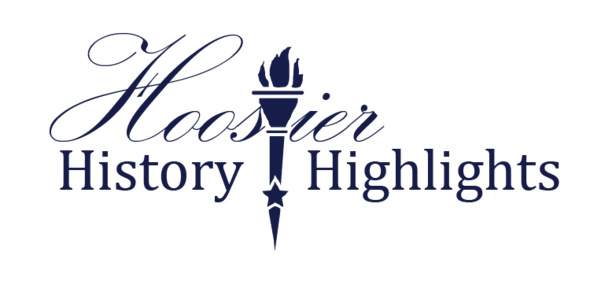This week in Indiana’s history …
 1868 – Schuyler Colfax of New Carlisle was elected Vice President of the United States, serving under Ulysses S. Grant. He had earlier been elected to Congress and was Speaker of the House. Nicknamed “Smiler” Colfax, he was described as “good-natured, kindly, cordial, and always diplomatic.”
1868 – Schuyler Colfax of New Carlisle was elected Vice President of the United States, serving under Ulysses S. Grant. He had earlier been elected to Congress and was Speaker of the House. Nicknamed “Smiler” Colfax, he was described as “good-natured, kindly, cordial, and always diplomatic.”
1908 – A marble obelisk was dedicated as a memorial at the Tippecanoe Battlefield, site of the 1811 battle between United States soldiers and Native American warriors. Ceremonies included a speech by Indiana Governor J. Frank Hanly and music by the Army Band from Fort Benjamin Harrison.
1919 – Young violinist Jascha Heifetz performed at the Murat Theater in Indianapolis. At age 18, the Russian virtuoso had already gained fame. His audience at the Murat requested five encores. He went on to a long career. When he died at age 86, he was considered by many to be the finest violinist of all time.
1924 – WFBM Radio went on the air in Indianapolis. Owned by the Merchants Heat and Light Company, the station transmitted from a company building on South Harding Street. The first program offered music interspersed with election returns. Today the station is on the air as WNDE.
1967 – Attorney and Civils Rights Leader Richard Hatcher was elected Mayor of Gary. He was one of the first African Americans to be elected mayor of a large American city. Born in Michigan City, he was the youngest of 13 children. He earned his law degree from Valparaiso University. In five terms as mayor, he became known for developing innovative approaches to solving urban problems. A statue of Mayor Hatcher was recently unveiled in front of the City Hall in Gary.
1988 – Indiana voters approved by 62 percent a referendum on establishing a state lottery. Scratch-off ticket sales started in October of 1989. Since then, Hoosier Lottery players have purchased $23 billion in Lottery products and have won $13.9 billion in prizes.
